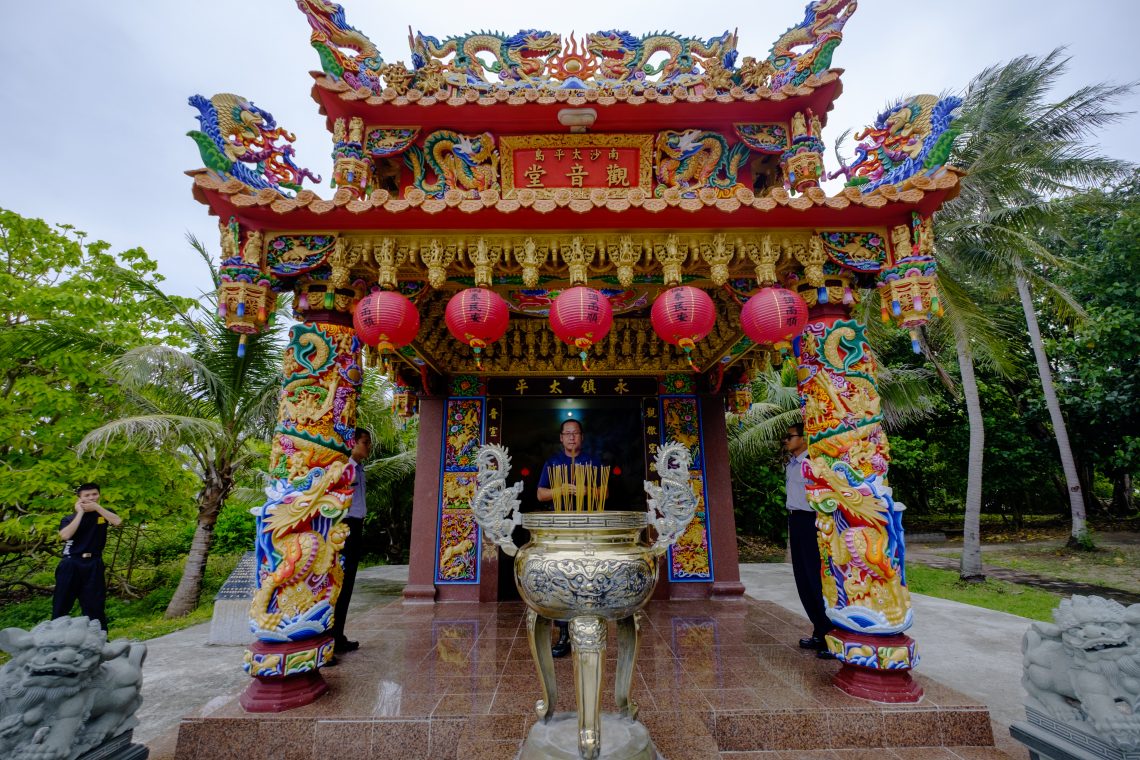South China Sea: Chinese encroachment unites neighbors
Chinese provocations in the South China Sea are leading Southeast Asian nations to strengthen cooperative efforts to defend their maritime claims.

In a nutshell
- China’s aggressive tactics are prompting closer defense ties with the U.S.
- ASEAN members are increasingly looking to mutually address security risks
- The Philippines and Vietnam seek extended sea entitlements at the UN
China’s increasingly brazen tactics in the South China Sea are leading its Southeast Asian neighbors to explore new areas of cooperation to defend their territorial claims and counter Beijing. After the Philippines in June and Vietnam in July filed claims with the United Nations for extended continental shelf entitlements in the sea, Manila and Hanoi are open to finding common ground in efforts to peacefully uphold their rights there. Singapore and the Philippines have also entered an important new defense agreement. The roles of China and the United States will loom large in the contested waters.
The South China Sea is one of the biggest semi-enclosed seas in the world, linking the Pacific and Indian Oceans. Over $5 trillion worth of trade – almost one-third of all global maritime trade – passes through its waters annually. The sea is also a fertile fishing area. But what contributes to both its significance and to the disputes is what lies underneath: oil, gas and potential hydrocarbon reserves.
The sea is highly contentious, with China on one side and Brunei, Malaysia, the Philippines and Vietnam, all members of the Association of Southeast Asian Nations (ASEAN), on the other. For decades they have been involved in disputes over the Spratly and Paracel Island chains. Although most of the disputes involve China, Vietnam and the Philippines, tensions are on the rise most visibly between Manila and Beijing.
Internationalization of South China Sea disputes
Geopolitical complexity in the disputed waters has also become more apparent due to the intensifying great power rivalry between China and the U.S. In years past, Southeast Asian countries mostly managed territorial sea claims bilaterally with China. But the issue was brought up in a multilateral setting for the first time in 2010 at the ASEAN Regional Forum, one of the world’s strongest forums on issues of the South China Sea.
Vietnam told then U.S. Secretary of State Hillary Clinton that China was encroaching on its territory. Ms. Clinton confirmed that Washington has a national interest in preserving open access to Asia’s maritime commons, freedom of navigation and respect for international law in the sea, despite traditionally maintaining neutrality in the territorial disputes.
Vietnam’s attempt to raise awareness of China’s belligerent approach by internationalizing the issue was understandable, given the power asymmetry between China and other disputants. Yet Beijing has long emphasized its preference for resolving disputes with direct bilateral negotiations. China perceived any U.S. involvement as interference, a sentiment that remains to this day.
Before U.S. involvement, Beijing was behind fatal clashes
It is important to note that fatal disputes in the South China Sea are nothing new; China was perpetrating serious clashes in the region long before the U.S. started playing a role. The deadliest of these incidents was the Sino-South Vietnam battle of the Paracel Islands in 1974 and the Johnson South Reef skirmish in 1988.
The Paracels, composed of 130 small coral islands and reefs, are presently claimed by Vietnam, Taiwan and China, but fell under the latter’s control when it forcibly ejected South Vietnamese troops from the chain, killing 74 Vietnamese service members in the process. Subsequently, Chinese forces violently drove the Vietnamese military off the southwestern Spratly Islands, resulting in the deaths of 64 Vietnamese sailors and marines.
A significant incident without fatalities occurred in early 2012, when China and the Philippines were involved in a standoff at Scarborough Shoal located in the northern Spratlys. Both countries claim the shoal as part of their national territory and accused each other of intruding.

Chinese oil rig escalates the standoffs
Two years later, in 2014, tensions rose over China’s placement of a giant state-owned oil rig inside Vietnam’s Exclusive Economic Zone (EEZ). This provocative incident marked the first time that Beijing had sent one of its oil rigs into another state’s EEZ without prior permission. The clash featured the ramming of boats between the two sides and an explosion of large anti-China protests inside Vietnam.
The disputants harbor no illusions that Beijing will not repeat such incidents in the future. As a result, the ASEAN countries are opening new channels for dialogue among themselves, while closer defense cooperation between Vietnam and especially the Philippines with Washington is materializing.
U.S.-China relations
Strains between China and the U.S., however, were exacerbated during the pandemic, when the administration of then President Donald Trump insisted that China needed to be held accountable for the spread of Covid-19. While other governments were distracted with managing the outbreak throughout 2020, Beijing was busy establishing administrative districts on the Spratly and Paracel islands.
In the same year, for the first time, the U.S. toughened its stance by officially rejecting specific Chinese claims in the disputed waters. The administration of President Joe Biden subsequently adopted a similarly strong position. During her 2022 visit to Jakarta for the ASEAN summit, Vice President Kamala Harris stated that America was in the region to stay, giving reassurance to allies that Washington had their backs in light of Chinese expansionism.
One can debate whether Washington’s strategy has been effective in deterring Beijing’s increasingly aggressive moves, but the gradual change of tone has been clear. The U.S. also maintains a prominent role in the region by conducting Freedom of Navigation Operations and sending military aircraft and warships into the South China Sea.
Facts & figures
Last year, in a display highlighting just how important it considers territorial integrity matters, Vietnam preemptively banned the Barbie film over a scene showing a map that some interpreted as including disputed Chinese claims to the sea. More tangibly, Hanoi has accelerated its land reclamation and dredging activities some seven-fold over the previous three years, according to a recent Center for Strategic and International Studies report. However, its reclamation of approximately 2,360 acres is just half that of China’s activities; Beijing has reclaimed over 4,650 acres of the sea since 2013.
In July 2023, prior to that year’s ASEAN Summit, China’s Ministry of Natural Resources unveiled what it dubbed a “standard map” that expands its claims in the seas eastward to include part of Taiwan. Vietnam, Taiwan, Malaysia and the Philippines rejected the new map while ASEAN peer Indonesia insisted that the drawing of territorial lines must be done in accordance with international laws.
By the end of 2023, China and the Philippines were embroiled in a dispute on Scarborough Shoal where Chinese vessels blasted water cannons and used aggressive tactics and military lasers to prevent Filipino fishing vessels from reaching the shoal.
Read more about the South China Sea and its environs
- The future of Europe’s Southeast Asia engagement
- East Asia realignment: Japan and the Philippines move closer
- ASEAN’s quest for relevance
- Indonesia’s election gives way to foreign policy challenges
Tensions between China and the Philippines – which since 1951 is a signatory to a Mutual Defense Treaty with the U.S. – are increasingly palpable. Unsurprisingly, Beijing was less than pleased when President Ferdinand Marcos Jr., who was elected in 2022, began embracing closer ties with the U.S., committing to new military cooperation and stationing agreements.
During a standoff in June of this year, which featured Chinese vessels engaged in the ramming and towing of Filipino boats in the Spratly Islands’ Second Thomas Shoal, Washington warned Beijing that it is obligated to defend Manila in any major conflict with an external actor under the 1951 treaty. China has routinely been impeding the Philippines in accessing its grounded World War II-era warship, complicating regular rotation and resupply missions.
Despite China’s rhetoric that it acts in accordance with established norms, it ignores international rules and disregards the International Permanent Arbitration in the Hague 2016 decision that found that China’s claims to parts of the sea are illegitimate. The panel concluded that Beijing does not have a right to resources in much of the disputed waters. It also ruled that the Spratly Islands are not islands in a legal sense, rather rocks or low-tide elevations. (For example, Second Thomas Shoal is classified as a submerged reef.)
Commitments among treaty partners and ASEAN members tested
The future trajectory of developments in the South China Sea depends not only on the level of commitment of the claimant countries to regional stability, but also America’s willingness to prioritize the issue and defend its treaty ally the Philippines while war rages in Gaza and Ukraine. President Biden was noticeably absent from the 26th ASEAN summit in Jakarta in September 2023, which seemed to participants and observers to contradict Secretary of State Antony Blinken’s insistence that Washington’s long-term focus remains in the Asia-Pacific region.
The rivalry between the U.S. and China is affecting ASEAN’s role in facilitating dialogue toward a solution. The organization’s spirit of consensus could be difficult to maintain, as some member countries are closer to Beijing than others. For example, Cambodia, a close ally of China, blocked a 2012 ASEAN consensus statement on the South China Sea and did so again four years later. This behavior may be repeated in future deliberations, even as it becomes increasingly urgent to take steps to prevent further incidents. ASEAN members may also need to balance the demands of great powers with their commitments to the organization.
Scenarios
Likely: Manila feels pressure while neighbors look to cooperate
China and the U.S. are likely to maintain the status quo in the disputed waters in the near future, despite their intensified rivalry. Tensions between China and the Philippines and the Spratly Island chain will be the focal point. China will likely continue to ignore the 2016 United Nations Convention on the Law of the Sea ruling and stick with “indisputable sovereignty” since “ancient time” as the basis for its claims.
Recently, China and the Philippines held talks, in which they agreed to defuse ongoing tensions, but they later disagreed about what had been agreed. Thus, de-escalation is likely to be fleeting. Despite the protests from other Southeast Asian countries, China’s growing ambition to assert control in disputed waters is unlikely to stop. De-escalation through the anticipated and legally binding Code of Conduct of the South China Sea is also unlikely, as both China and ASEAN members will not sign the document in the foreseeable future.
While some ASEAN members may remain holdouts on their response to China’s assertive moves, which could weaken ASEAN’s ability to deal with regional security issues, several member nations will continue moving closer to one another through bilateral actions. New efforts at mutual cooperation among the Philippines and Vietnam to address revanchism from China serve as evidence of this trend. Notably, the new defense agreement between Singapore and the Philippines further demonstrates how the situation in the South China Sea is bringing ASEAN states closer.
Less likely scenario: Tensions and conflicts focus on Hanoi
While the Vietnamese land reclamation initiative brings more militarization to the disputed waters, it is less likely to create serious tensions with Beijing. Hanoi maintains a policy of keeping the South China Sea issue under wraps, and its land reclamation efforts seem to be more about boosting its presence in the region amid the rising tensions than about actively escalating them. Thus, this situation is unlikely to lead to conflict.
For industry-specific scenarios and bespoke geopolitical intelligence, contact us and we will provide you with more information about our advisory services.










